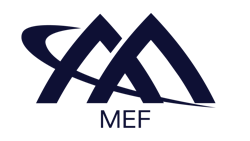MEF’s Lifecycle Service Orchestration (LSO) API adoption jumps
MEF is seeing greater adoption for its Lifecycle Service Orchestration (LSO) API, with more than 160 global service providers from 65 countries involved in the adoption lifecycle.
Various factors drive the LSO's momentum, including its enhanced enterprise API portfolio, the LSO Payload Factory program, and new smart contract work.
MEF said these initiatives, new certification programs, and LSO partner-finding tools mark significant progress in its mission to accelerate NaaS automation and digital transformation across the global NaaS ecosystem.
One of MEF's key focuses is targeting enterprises. Extending APIs to enterprises, MEF said, enhances the LSO offering and drives broader industry adoption. A key example is MEF’s Circuit Impairment & Maintenance (CIM) Service API, which bridges the gap between networks and applications, supporting the growing focus on network APIs.
A joint demonstration at GNE 2024 by AT&T, Bloomberg, Prodapt, UMPC, Verizon, and Williams-Sonoma, the CIM Service API exemplifies how real-time notifications can improve enterprise network management. Enterprises gain access to NaaS capabilities through these open-standard APIs, such as automated ecosystems, multi-domain connectivity, and enhanced management and visibility.
Daniel Bar-Lev, MEF’s Chief Product Officer, said there is a greater understanding of how APIs are becoming “business enablers.”
“APIs are becoming more important as business enablers, especially in a world that’s moving towards more automation,” he said. “In the coming year, we’re going to be putting more emphasis on solidifying that recognition of those companies that are implementing open standard LSO APIs.”
Accelerating service availability
A critical aspect that the greater adoption of the LSO APIs will create for the networking community is faster service availability.
By becoming MEF LSO compliant, ICT service providers open new opportunities for operational interactions between buyers and sellers, enabling new revenue streams and driving greater customer value.
“We have these APIs for enterprises,” Bar-Lev said. “We’re also seeing more and more work in the direction of the network, giving faster and easier access to the infrastructure and services that providers offer.”
He added that this would not just be “for the enterprises, but also the application developers.”
Likewise, service providers are looking to make their APIs more available. Bar-Lev pointed to the Circuit Impairment and Maintenance (CIM) API, which is focused on automating real-time updates on impairments and maintenance.
Another new development is the LSO Payload Factory program, which accelerates the standardization of machine-readable product descriptions for use in NaaS offerings.
This approach enables rapid development of pre-standard product payloads through member collaboration, which can be standardized later. MEF said this addresses the market’s need for faster introduction of connectivity, cybersecurity, clouds, and resource products.
“Now that we have this major investment in the LSO APIs, it makes sense to make these APIs useful for one or two products, but also for as many products as possible,” Bar-Lev said. “The idea is we can’t wait for standards to be created slowly, but we need to get consensus on those product payloads to be used on those LSO APIs.”
He added that the MEF is working with its members to get information on product information.
“We’re introducing innovative ways to gather elements from our members and come out with those product payloads as quickly as possible, and then afterward, as we see market traction standardizing around that consensus that’s been achieved,” Bar-Lev said.
API revenue potential
API has great revenue potential for service providers.
One provider that’s helping drive the greater adoption of LSO APIs is Console Connect.
The company recently launched an open-source solution to help developers accelerate their adoption of standards-based APIs, such as MEF’s LSO Sonata APIs.
Console Connect’s solution, accessible through GitHub, aligns with common API frameworks that deliver end-to-end business automation of services.
A recent McKinsey & Company study forecast that the network API market could be worth up to $300 billion in connectivity and edge computing-related revenue for service providers over the next five to seven years.
“Over the next five to seven years, we estimate the network API market could unlock around $100 billion to $300 billion in connectivity- and edge-computing-related revenue for operators while generating an additional $10 billion to $30 billion from APIs themselves,” the research firm said in its report.
The firm pointed out that traditional service providers won’t be the only group to take advantage of the API opportunity.
Its report argued that telcos “would cede as much as two-thirds of the value creation to other players in the ecosystem, such as cloud providers and API aggregators—repeating the industry’s frustrating experience of the past two decades.”
LSO certification ahead
As providers and enterprises move through the LSO API Certification Program, MEF will launch a new LSO API Certification Program phase in the fourth quarter, combining development-stage IT testing with market-ready certification validation.
The updated certification framework provides definitive proof of LSO API interoperability readiness for service providers and enterprises.
As API-driven automation becomes increasingly critical for business operations, MEF’s certification program ensures participants can confidently implement standardized, interoperable APIs across the NaaS ecosystem.
Cisco, Broadcom, and Palo Alto are moving through the certification process. Today, providers can participate in the SD-WAN certification process.
“The most important SD-WAN certification is available now and is generally available to everyone, including service providers and vendors,” said Pascal Menezes, CTO at MEF. “Also, SASE is available.”
For related articles, visit the Business Topic Center.
For more information on high-speed transmission systems and suppliers, visit the Lightwave Buyer’s Guide.
To stay abreast of fiber network deployments, subscribe to Lightwave’s Service Providers and Datacom/Data Center newsletters.
About the Author
Sean Buckley
Sean is responsible for establishing and executing the editorial strategy of Lightwave across its website, email newsletters, events, and other information products.



